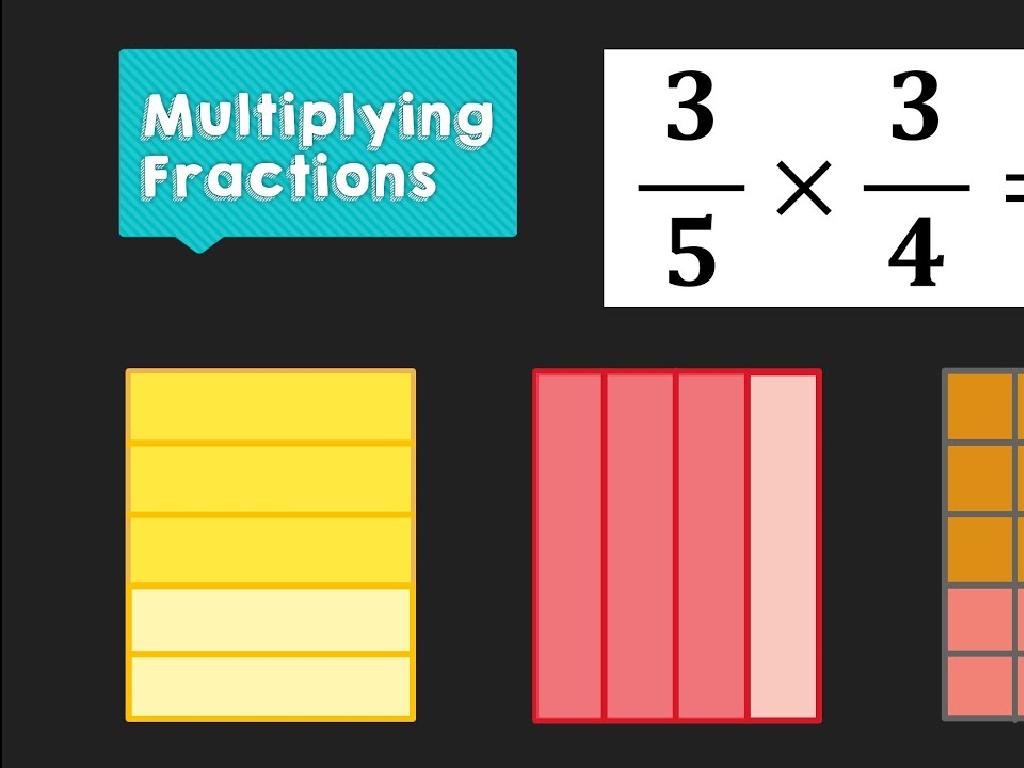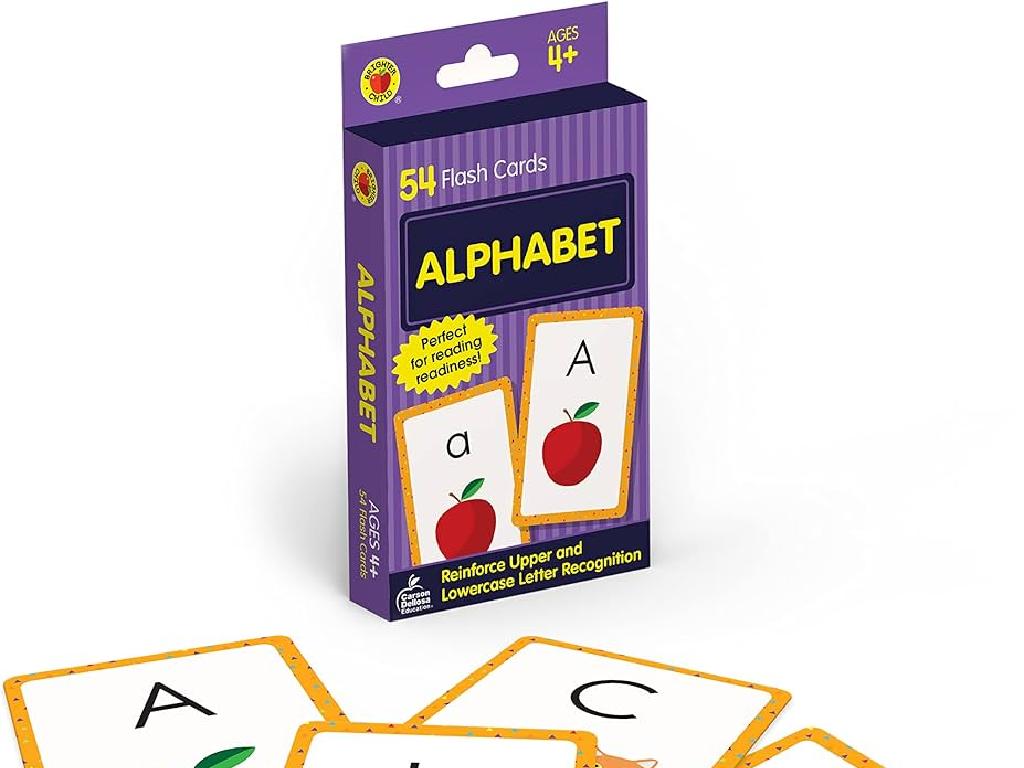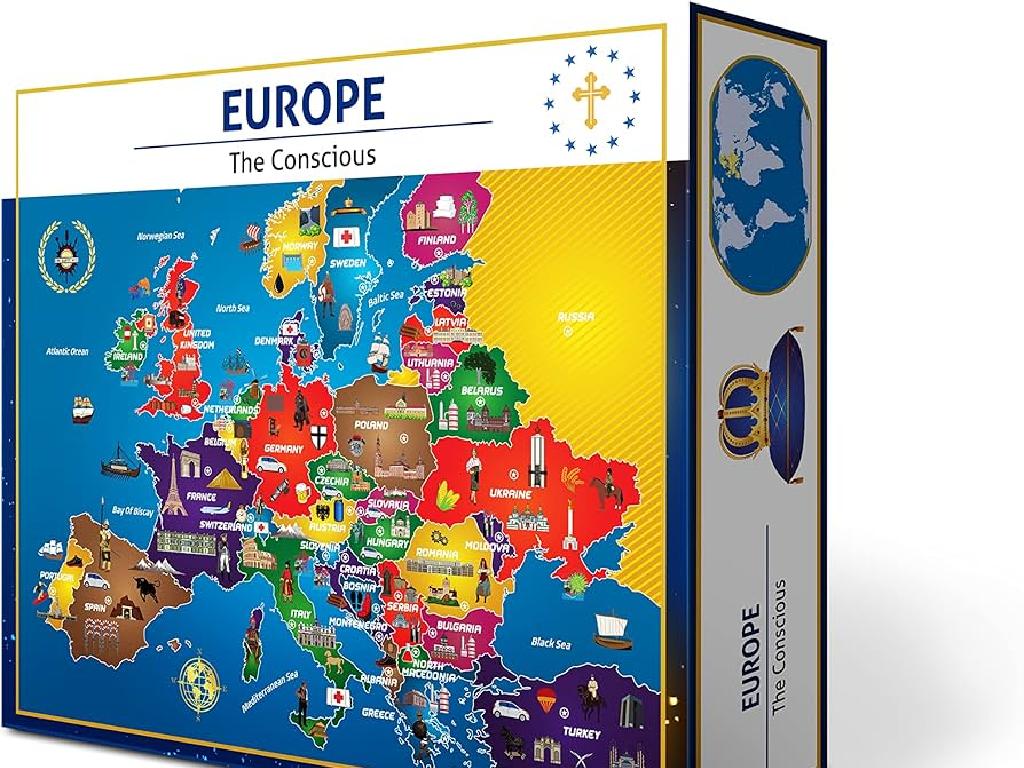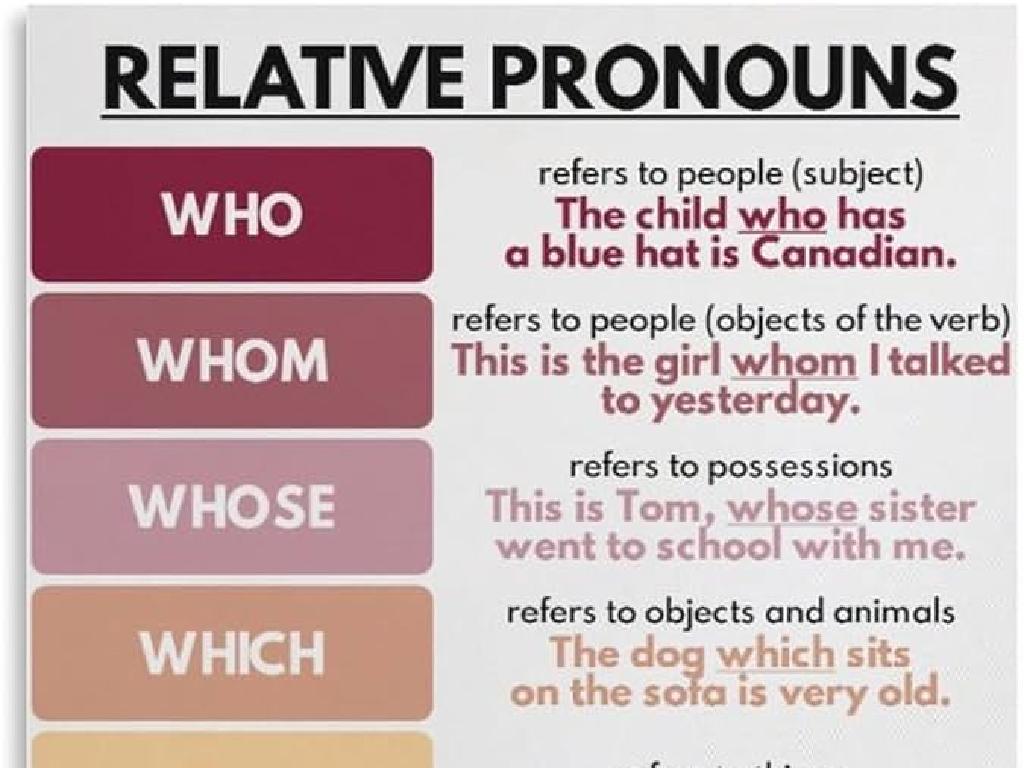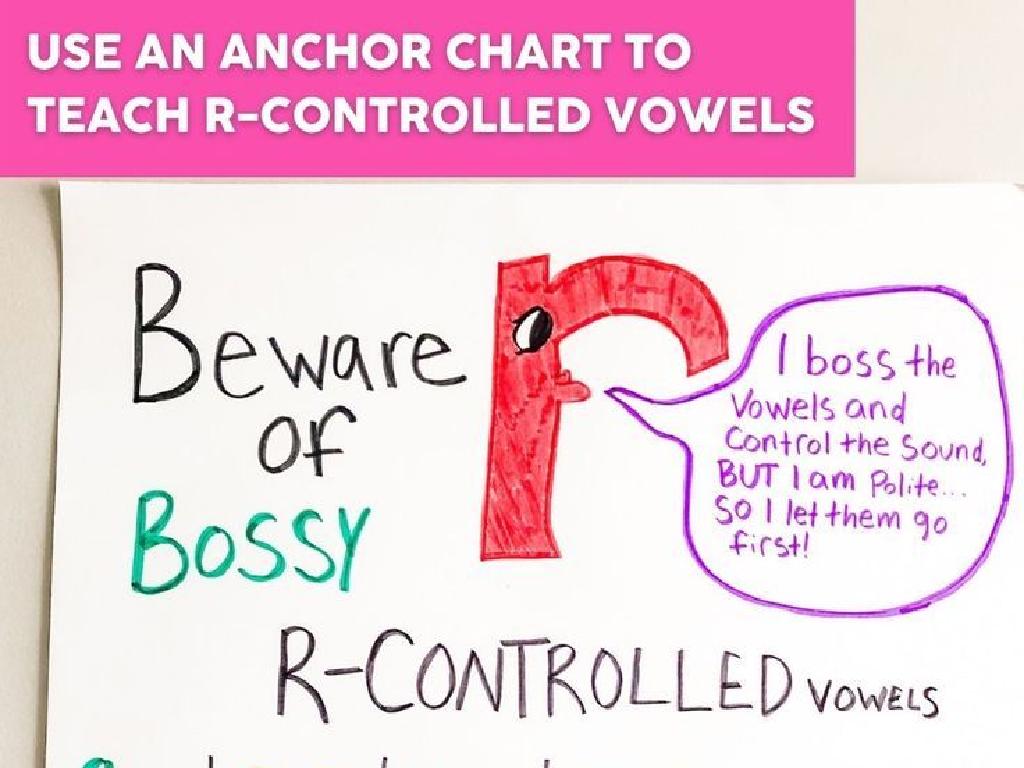Identify Independent And Dependent Variables
Subject: Science
Grade: Seventh grade
Topic: Designing Experiments
Please LOG IN to download the presentation. Access is available to registered users only.
View More Content
Understanding Variables in Experiments
– What are variables?
– Variables are elements that can change in an experiment.
– Types: Independent vs Dependent
– Independent variables are changed by the scientist, dependent variables are observed to see if they are affected.
– Role of variables in experiments
– Variables determine the experiment’s outcome; they’re what we measure and test.
– Significance of identifying variables
– Knowing variables helps in predicting and understanding results.
|
In today’s class, we’ll explore the concept of variables within scientific experiments. A variable is anything that can change or be changed in an experiment. We’ll distinguish between independent variables, which are the ones we change on purpose to see what happens, and dependent variables, which we observe to see if they are affected by the changes we make. Understanding these concepts is crucial for designing experiments because it allows us to make predictions, draw conclusions, and understand the cause-and-effect relationships in scientific studies. Encourage students to think of variables as the ‘moving parts’ of an experiment that can be manipulated or measured.
Understanding Experiments in Science
– Define an experiment
A scientific procedure to test a hypothesis.
– Purpose of experiments
To explore cause and effect by investigating questions.
– Examples of experiments
Volcano eruption model, plant growth with different fertilizers.
– Independent vs. dependent variables
Independent variables are changed to see the effect on dependent variables.
|
This slide introduces the concept of an experiment in the scientific context. An experiment is a methodically organized procedure where researchers manipulate one variable to discover its effect on another, thereby testing a hypothesis. The purpose of conducting experiments is to explore cause and effect relationships within the natural world. Provide students with clear examples of scientific experiments, such as creating a model of a volcano eruption or observing plant growth with different types of fertilizers. Emphasize the role of independent variables (the conditions that are changed) and dependent variables (the observed effects of the changes) in designing an experiment. Encourage students to think of their own examples and consider what variables could be tested.
Understanding Variables in Experiments
– Define variables in science
– Variables are elements that can change in an experiment.
– Differentiate independent and dependent
– Independent variables are changed by the scientist, dependent variables are observed to see if they are affected.
– What are controlled variables?
– Controlled variables remain constant throughout the experiment.
– Significance of each variable type
|
This slide aims to clarify the different types of variables in scientific experiments for seventh graders. Begin with a definition of what variables are in the context of science. Then, explain the difference between independent and dependent variables, emphasizing that the independent variable is what the experimenter changes, while the dependent variable is what is measured or observed. Introduce controlled variables as factors that are kept the same to ensure a fair test. Highlight the importance of understanding these concepts for designing reliable experiments. Use examples relevant to their age group to solidify understanding, such as the effect of sunlight (independent variable) on plant growth (dependent variable), with water amount as a controlled variable.
Understanding Independent Variables
– Define independent variables
– An independent variable is what the experimenter changes or controls.
– How to identify them
– Look for the variable that is manipulated to observe an effect on the dependent variable.
– Examples in experiments
– Plant growth at different sunlight levels; the amount of light is the independent variable.
– Significance in experiments
|
This slide aims to clarify the concept of independent variables within the context of scientific experiments. An independent variable is the one that is changed or controlled by the scientist to test its effects on the dependent variable. To identify an independent variable, students should ask themselves what the experimenter is intentionally changing in the setup. For example, when examining the effect of sunlight on plant growth, the variable of sunlight is independent because it’s what the experimenter varies. It’s crucial for students to understand that the independent variable is the cause while the dependent variable is the effect in an experimental relationship. Encourage students to think of their own examples and discuss why understanding independent variables is essential for designing fair and valid experiments.
Understanding Dependent Variables
– Define dependent variables
– The outcome we measure in an experiment
– Identifying dependent variables
– It responds to changes in the independent variable
– Examples in experiments
– Plant growth measured by height as water amount varies
– Significance in analysis
– Helps in understanding the effects of the independent variable
|
This slide aims to clarify the concept of dependent variables for seventh-grade students. Begin with a definition, explaining that a dependent variable is what researchers measure in an experiment and expect to change when the independent variable is manipulated. Emphasize the cause-and-effect relationship between independent and dependent variables. Provide clear examples, such as measuring the growth of plants in response to different amounts of water, to illustrate how dependent variables operate in real experiments. Highlight the importance of dependent variables in analyzing the effects of experimental conditions. Encourage students to think of other scenarios where a dependent variable would be used and how it would be measured.
Let’s Practice: Identifying Variables
– Identify variables in scenarios
– Group activity: design an experiment
Work together to create an experiment idea
– Determine independent & dependent variables
What changes and what is measured?
– Share findings with the class
|
This slide is meant to engage students in a hands-on group activity where they will apply their knowledge of independent and dependent variables. Start by discussing various scenarios and identifying the variables involved. Then, have the students form small groups to design a simple experiment, ensuring they can distinguish between the independent variable (what they will change) and the dependent variable (what they will measure as a result). After the activity, each group will share their experiment design with the class, fostering a collaborative learning environment. Provide guidance and examples as needed, and encourage creativity in their experimental designs. Possible activities could include testing plant growth with different amounts of sunlight, or measuring the effect of exercise on heart rate.
Class Activity: Variable Hunt
– Pair up for a variable search
– Find variables in school
– Look for factors that can change and affect others
– Create a chart of variables
– Organize independent and dependent variables clearly
– Present your findings
– Share your chart and explain the relationship
|
This activity is designed to help students apply their understanding of independent and dependent variables in a practical setting. In pairs, students will search the classroom or school to identify real-life examples of variables. They should consider what factors can be changed intentionally (independent variables) and what factors would be observed or measured as a result (dependent variables). After collecting their data, students will create a chart to organize their findings, distinguishing between the independent and dependent variables. Finally, they will present their charts to the class, explaining the relationship between the variables they’ve identified. For the teacher: Prepare a list of 4-5 potential examples in case some students struggle to find variables. Examples could include the effect of sunlight on plant growth or the relationship between study time and test scores.
Conclusion: Variables in Experiments
– Importance of variables
Identifying variables helps in understanding relationships and outcomes.
– Review: Independent vs. Dependent
Independent variables are changed to observe effects on the dependent variables.
– Engage in Q&A session
– Recap key concepts
Summarize the role of variables in designing experiments.
|
As we wrap up today’s lesson, emphasize the significance of correctly identifying independent and dependent variables in experiments. This understanding is crucial for students as it allows them to control and measure factors effectively, leading to valid and reliable results. Review the definitions: independent variables are the ones that are manipulated, while dependent variables are the ones being measured or observed. Open the floor for a Q&A session to address any lingering uncertainties and ensure comprehension. Conclude by summarizing the main points of the lesson, reinforcing the importance of variables in the scientific method, and how they contribute to the success of an experiment. This will help solidify the students’ understanding and prepare them for designing their own experiments.

